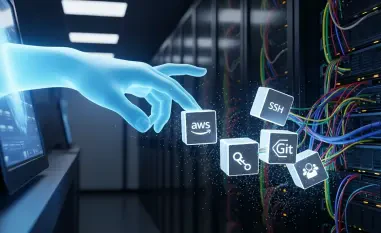Introduction
Imagine a scenario where a trusted employee, with full access to sensitive data, inadvertently clicks on a phishing email, exposing critical systems to attackers, and this isn’t a rare incident but a growing reality. Insider threats—whether accidental or intentional—have become a leading cause of data breaches in organizations worldwide, costing millions annually and challenging Chief Information Security Officers (CISOs) to rethink security strategies. The importance of addressing this issue cannot be overstated, as the human element often proves to be the weakest link in cybersecurity defenses.
The purpose of this FAQ article is to provide clear, actionable guidance for CISOs navigating the complex landscape of insider threats. It aims to answer critical questions surrounding the nature of these risks, their evolving tactics, and effective mitigation strategies. Readers can expect to gain insights into the motivations behind such threats, the role of technology in amplifying them, and practical steps to safeguard organizational assets.
By breaking down the topic into key questions, this content offers a comprehensive look at the challenges and solutions. From understanding the scope of human error to tackling sophisticated malicious actions, the following sections address the most pressing concerns. The goal is to equip security leaders with the knowledge needed to build resilient defenses against threats originating from within.
Key Questions
What Are Insider Threats and Why Are They a Growing Concern for CISOs?
Insider threats refer to security risks stemming from individuals within an organization, such as employees, contractors, or partners, who may cause harm either through negligence or malicious intent. These threats are particularly concerning because insiders often have legitimate access to systems and data, bypassing external defenses. The rise in remote work and cloud adoption has further amplified exposure, making it easier for sensitive information to be mishandled or stolen.
Recent data underscores the urgency of this issue. Reports indicate that a significant percentage of data breaches—around 60%—involve human error, such as falling for phishing scams or misusing credentials. Moreover, the financial impact is staggering, with the average cost of breaches caused by malicious insiders reaching millions per incident, far exceeding other types of breaches. This growing frequency and cost highlight why CISOs must prioritize insider risk management as a core component of their security posture.
The concern extends beyond numbers to the evolving nature of workplace dynamics. Economic pressures and shifting employee loyalties can drive intentional acts of sabotage or data theft, especially among departing staff. As organizations grapple with these multifaceted risks, understanding the root causes and their implications becomes essential for developing robust countermeasures.
What Motivates Insider Threats and How Do These Drivers Impact Organizations?
Insider threats are driven by a range of motivations, each posing unique challenges to organizational security. Negligence often arises from a lack of awareness or inadequate training, leading to accidental data leaks through actions like sharing passwords or mishandling files. On the other hand, malicious intent can stem from financial gain, personal grievances, or even external coercion, with disgruntled employees sometimes seeking retribution through data theft or system disruption.
Economic factors also play a significant role in shaping these behaviors. For instance, financial stress can push individuals to sell sensitive information or collaborate with external threat actors. Studies show a notable increase in data loss attributed to departing employees, with a high percentage of CISOs reporting such incidents in recent surveys. This trend suggests that exit processes and offboarding protocols must be tightened to prevent unauthorized access post-employment.
The impact on organizations is profound, affecting not just finances but also reputation and operational continuity. When sensitive data is compromised, trust with clients and partners can erode, leading to long-term consequences. Recognizing these diverse motivations allows CISOs to tailor prevention strategies, addressing both human vulnerabilities and systemic gaps that threat actors might exploit.
How Has Technology, Like AI, Changed the Landscape of Insider Threats?
Advancements in technology, particularly artificial intelligence (AI), have significantly altered the dynamics of insider threats, making them more sophisticated and harder to detect. AI tools enable even low-skilled individuals to craft convincing social engineering attacks, such as phishing emails that appear legitimate. This lowers the barrier for malicious insiders or external actors impersonating staff to gain unauthorized access.
Specific examples illustrate the severity of this trend. Attackers have targeted platforms like Salesforce by posing as IT helpdesk personnel, tricking employees into sharing credentials or installing harmful applications. Such incidents demonstrate how technology can amplify insider risks, turning minor lapses into major breaches that compromise customer data and system integrity.
For CISOs, this evolution necessitates a shift in defense mechanisms. Traditional security tools may no longer suffice against AI-driven tactics, requiring the adoption of advanced detection systems and behavioral analytics. Staying ahead of these technological shifts is critical to identifying suspicious activities early and minimizing potential damage.
What Are the Most Effective Strategies for Mitigating Insider Threats?
Mitigating insider threats demands a layered approach that combines technology, processes, and culture. Implementing data loss prevention (DLP) tools and Zero Trust architectures can help monitor and restrict unauthorized data access or exfiltration. These solutions focus on verifying every user and device, eliminating standing privileges through just-in-time access models, and making anomalous behavior more visible.
Beyond technical measures, establishing robust operational frameworks is equally vital. Clear protocols for handling security alerts, formal disciplinary actions for policy violations, and thorough vetting of third-party and remote workers can reduce risks. Network segmentation by function and blocking obvious data exfiltration paths further protect critical systems, especially in operational technology environments.
Cultural initiatives also play a pivotal role in prevention. Fostering a security-aware mindset through regular training and awareness campaigns can minimize negligence-driven incidents. Balancing monitoring with privacy considerations ensures that employees feel trusted rather than surveilled, maintaining morale while still safeguarding assets. Together, these strategies create a comprehensive defense against the diverse spectrum of insider risks.
How Can CISOs Balance Security Measures with Employee Privacy?
Striking a balance between security and employee privacy is a delicate yet essential task for CISOs managing insider threats. Overzealous monitoring can erode trust, leading to dissatisfaction and potentially increasing the likelihood of malicious behavior. Therefore, insider risk programs must incorporate privacy-by-design principles, ensuring that surveillance is proportionate and transparent.
Practical steps include clearly communicating monitoring policies to staff, explaining the purpose and scope of data collection. Using anonymized data for behavioral analysis can further protect individual identities while still identifying risky patterns. Tools like Microsoft Purview can assist in achieving visibility without compromising personal boundaries, focusing on system-level insights rather than invasive tracking.
This balance not only mitigates legal and ethical concerns but also supports a positive workplace environment. When employees understand that security measures are in place to protect rather than punish, cooperation improves. CISOs must continually evaluate their approaches, ensuring that protective mechanisms align with both organizational goals and individual rights.
Summary
This FAQ article addresses the critical aspects of insider threats, providing CISOs with a clear understanding of their nature, motivations, and evolving challenges. Key points include the significant role of human error in breaches, the impact of AI in amplifying risks, and the diverse drivers behind malicious actions. Each question highlights a unique facet of the issue, from financial repercussions to the need for updated security tactics.
The main takeaway is that combating insider threats requires a multifaceted strategy encompassing technology, procedural rigor, and cultural awareness. Solutions like Zero Trust, DLP tools, and privacy-conscious monitoring stand out as essential components of a robust defense. Additionally, recognizing the human element—whether through training or balanced oversight—remains central to reducing vulnerabilities.
For those seeking deeper exploration, consider reviewing industry reports from cybersecurity organizations or engaging with resources on Zero Trust implementation. These materials can offer further insights into tailoring defenses to specific organizational needs. Staying informed about emerging trends ensures that security measures remain relevant and effective against evolving risks.
Final Thoughts
Reflecting on the discussions, it becomes evident that insider threats pose a persistent challenge, demanding unwavering attention from CISOs. The insights shared through various questions underscore the complexity of managing risks from within, where human behavior and technological advancements often collide. Addressing these issues requires not just tools but a mindset shift across entire organizations.
Looking ahead, a proactive stance proves necessary, with a focus on continuous assessment and adaptation of security frameworks. CISOs are encouraged to invest in dedicated resources for insider risk management, ensuring that systems evolve alongside emerging threats like AI-driven attacks. Building partnerships with industry peers to share best practices also offers a pathway to strengthen defenses.
Ultimately, the journey to combat insider threats hinges on integrating innovative solutions with a deep respect for employee trust. By fostering environments where security and privacy coexist, organizations stand a better chance of deterring internal risks. Each CISO is urged to evaluate their current strategies, identifying gaps and opportunities to fortify their protective measures for the long term.













